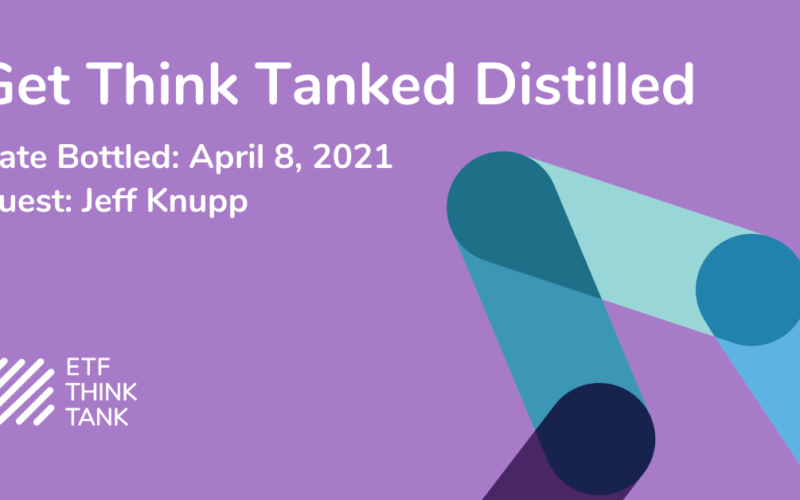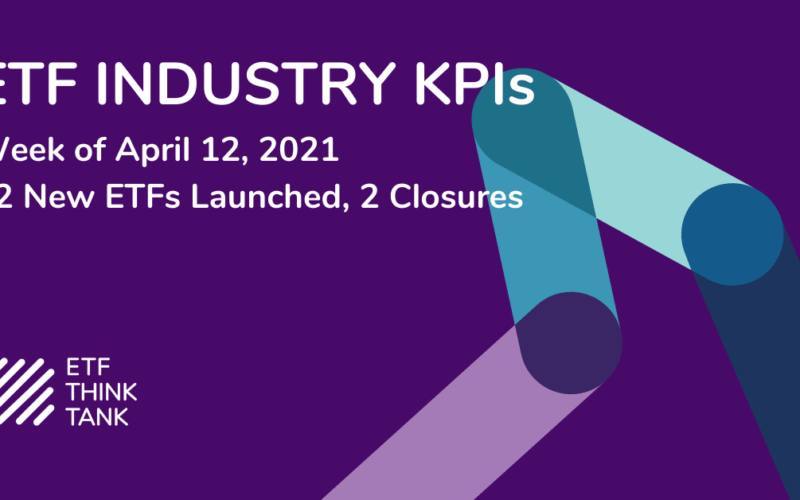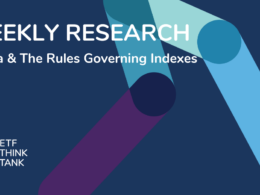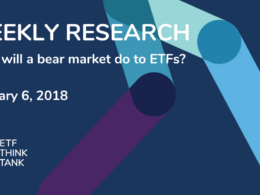Bonds, Inflation and Income Needs?

Most unsophisticated investors miss the fact that the bond market offers a larger potential surprise risk/reward imbalance than stocks. Investors are prepared for stocks to go down 10-20%, and past performance has conditioned investors to think bonds are always safe. However, few discussions exist around negative scenarios for bonds. And why should they? Global central banks have effectively back stopped the bonds market. This is why I found Jack Pitcher and Christopher Cannon’s April 9th Bloomberg article helpful to share. The article is titled “A Hidden Bond-Market Problem: American savers could one count on bonds to provide meaningful returns with modest risk. Not anymore.” The paradox that the article highlights is that institutions – as pensions, insurance companies and endowments – may be boxing themselves in with their traditional portfolio strategies in order to achieve minimum income streams. Most importantly, institutions may do this despite financial conditions pointing to weak outcomes for fixed income portfolios.
Inflation on the Horizon?
In the ETF Think Tank, we often have open debates during our Happy Hours about whether we are more concerned about inflation or deflation; but for now, let’s just assume inflation is in front of us at a rate of about 2%. After all, the Fed’s mandate seems clear – we want inflation to increase to over 2%. Why should we question Mr. Powell’s plan? (Forgive the sarcasm.) The point is that we need to address the facts as we know them, and Mr. Powell seems confident that inflation is part of the solution, and that it can be managed (see April 8th comments and April 11th 60 Minutes interview). Having said that, here we are at a critical point where price, as measured by the Producer Price Index, is again creeping up to highs while inflation remains benign at 1.7% (see latest statistics as of April 13th at the U.S. Bureau of Labor Statistics). This leads us to question whether inflation will remain at 2% if the U.S. Economy starts pacing at a 7% rate. Sure, this is a Goldilocks scenario, but the point remains: are these expectations reasonable or a fairytale?


Is Your Pension Reaching for 5%?
The fact is that measuring inflation is a challenge, and while we can argue about which items drive inflation most as measured by CPI (oil, real estate food), investors mostly assume that interest rates are aligned with inflation. This is the paradox. Put simply, when hundreds of billions have followed traditional assumptions, then we must question whether those assumptions will remain consistent if circumstances change. Who is the buyer when so many institutions, following the same set of rules, need to make adjustments at the same time? What happens when such institutions re-adjust? Will the price of junk credit, as reflected by current prices, adjust neatly to conditions when there are more sellers than buyers? How will the investor sentiment adjust back to the old way of thinking? After all, there was a period of time when earning a 5% coupon on your bond portfolio was reasonable.


Source: Bloomberg
The rerating of credit over the past decade has simply left savers and institutions vulnerable to a limited supply of high-quality credits providing a 5% coupon. As the charts below highlight, back in 2008 for example, the credit spectrum yielding 5% amounted to $932 Billion across 580 parent issuers, and included large Federally guaranteed entities like the Federal National Mortgage Association (Fannie Mae), Federal Home Loan and Federal Home Loan Mortgage Corp (Freddie Mac). In 2019, there were only $333 Billion across just 301 parent issuers. That shrinking pool of quality has now shrunk to $131.7 Billion and only 138 parent issuers. What’s an investor supposed to do?
 Source: Bloomberg
Source: Bloomberg
 Source: Bloomberg
Source: Bloomberg
A Solution or Answer
Of course, the answer to the question is structure matters. Put another way, look to active management, or those ETFs whose processes are dynamic and add value. Also, reaching for duration marries the problem and would be more aligned with a bet on deflation. To that point, we also recommend not pushing hard for the 5% cash flow yield. As a hypothetical portfolio using the ETF Think Tank tools, we list 6 ideas that together, on an equally balanced weighting, could produce 4.6% in cash flow. Note that credit is an important consideration in these examples, arguably even more important than fees.

Summary
Here are the facts. Since 2008, the pool of named government credit assuring payment of cash flow for bonds yielding 5% has shrunk to a fraction of what it once was. Specifically, it is 14% in terms of dollars ($932 billion vs $132 billion), and 25% in terms of the number of quality issuers (580 vs 138). This shrinkage creates a paradox, as flow of funds have inflated prices. Institutions boxed in by traditional investing styles are all chasing the same names to reach their mandate.
Given these circumstances, and the reality that innovation offers alternative solutions, we think investors should explore different combinations of solutions. Avoiding the herd is sometimes the most obvious way to pivot away from a problem. Don’t forget – as a rule, markets anticipate changing conditions. If inflation, as measured by CPI, picks up at a steady pace (between 2 and 2.2%), and GDP growth runs hot at 7%, what will the institutional buyer do when rates start rising?


Disclosure
The information provided here is for financial professionals only and should not be considered an individualized recommendation or personalized investment advice. The investment strategies mentioned here may not be suitable for everyone. Each investor needs to review an investment strategy for his or her own particular situation before making any investment decision.
All expressions of opinion are subject to change without notice in reaction to shifting market conditions. Data contained herein from third party providers is obtained from what are considered reliable sources. However, its accuracy, completeness or reliability cannot be guaranteed.
Examples provided are for illustrative purposes only and not intended to be reflective of results you can expect to achieve.
All investments involve risk, including possible loss of principal.
The value of investments and the income from them can go down as well as up and investors may not get back the amounts originally invested, and can be affected by changes in interest rates, in exchange rates, general market conditions, political, social and economic developments and other variable factors. Investment involves risks including but not limited to, possible delays in payments and loss of income or capital. Neither Toroso nor any of its affiliates guarantees any rate of return or the return of capital invested. This commentary material is available for informational purposes only and nothing herein constitutes an offer to sell or a solicitation of an offer to buy any security and nothing herein should be construed as such. All investment strategies and investments involve risk of loss, including the possible loss of all amounts invested, and nothing herein should be construed as a guarantee of any specific outcome or profit. While we have gathered the information presented herein from sources that we believe to be reliable, we cannot guarantee the accuracy or completeness of the information presented and the information presented should not be relied upon as such. Any opinions expressed herein are our opinions and are current only as of the date of distribution, and are subject to change without notice. We disclaim any obligation to provide revised opinions in the event of changed circumstances.
The information in this material is confidential and proprietary and may not be used other than by the intended user. Neither Toroso or its affiliates or any of their officers or employees of Toroso accepts any liability whatsoever for any loss arising from any use of this material or its contents. This material may not be reproduced, distributed or published without prior written permission from Toroso. Distribution of this material may be restricted in certain jurisdictions. Any persons coming into possession of this material should seek advice for details of and observe such restrictions (if any).












